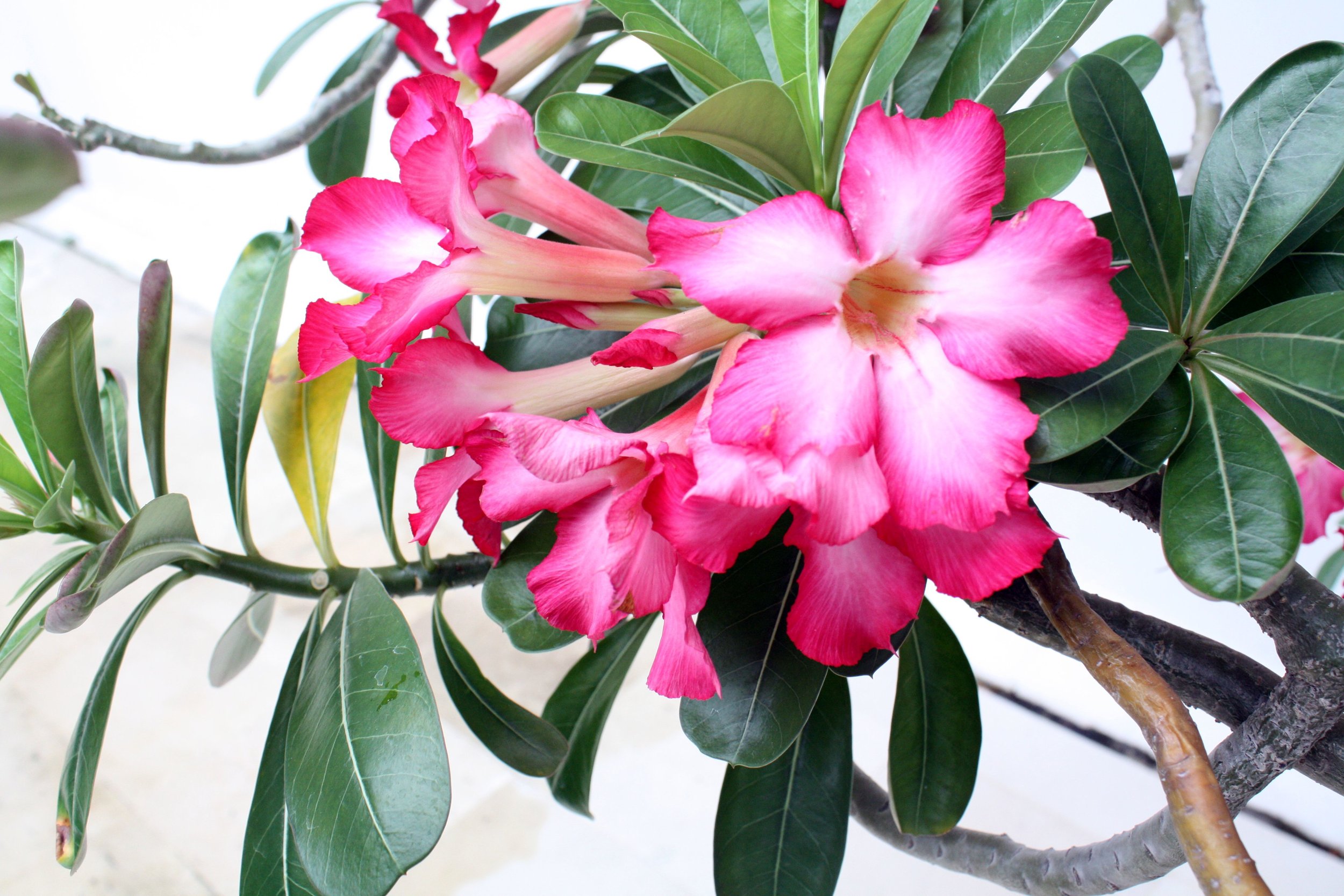Out of the 14,000+ islands in Indonesia, we only made it to the widely beloved Bali (which we had to see for ourselves) and its neighbouring island of Java. But even with our very surface experience, it was evident that Indonesia is home to an incredible amount of diversity - just not in the sense that we’re used to back home. There aren’t a lot of immigrants here, there isn’t a ton of international food, but there are migrants within the islands and there is a wealth of regional food that gets transferred throughout the country.
The diversity across all of the islands in Indonesia means that people very rarely feel the need to immigrate to another country - if there is not a lot of opportunity in your hometown, you can move to another island where the economy is doing better. If you love to cook but the competition is stiff, move somewhere else and serve food from back home. It’s a really remarkable country because it has a strong feeling of culinary, religious and geographical diversity without a lot of immigration or connection to the rest of the world. It genuinely feels like a self contained world made up of dozens of smaller countries - we only wish we had been able to visit more than two of them!
Our first stop, Bali, gave us a slice of home during our 3 month stint abroad: from Southern Californian inspired cafés to very reasonably priced high end meals, Bali showed us a range of options we had not seen in other parts of Southeast Asia. We were excited to find freshly baked gluten-free bread (some of the best we’d ever tasted) to smoothie bowls and hearty salads, foods that we have been missing from our diet.
You mean I can eat the bread here?! And it was freshly baked this morning?!
On the other hand, Java showed what Indonesia truly has to offer. You can find a variety of stewed, fried, or grilled meat and fish served with rice with more sambal choices than you can ever imagine. There was even a restaurant that had over 40 options of sambal alone! We also learned that sambal is just the word for a condiment that is made with chilies and customized with a variety of other ingredients: shrimp paste, lemongrass, tomatoes, tiny fried fish… the list goes on. The cuisine can be quite sweet here so ask for less sugar if that’s your preference, whether it be in your drink or peanut dressing for the classic Gado Gado and Lotek dishes.
Java also showed us the incredible hospitality of Indonesian people. Our Airbnb hosts in Yogyakarta (mostly known as Jogja) took us out for breakfast, brought us to the restaurant that they’re opening and let us hang out with their staff trading recipes, then took us out for dinner with their friends. We ended up spending about three days just chilling in their restaurant, learning some homey Indonesian recipes and teaching the staff some of our favourite Western dishes. In Jakarta, our Airbnb host also took us out for a meal, showing us her favourite restaurant serving up her hometown’s food. Everyone we met was incredibly generous and made us feel really welcome.
The strongest feeling that Indonesia left us with is the desire to go back, to see it more fully. Sumatra, and especially Padang, the birthplace of Beef Rendang, is calling to us. We’d love to see Sulawesi and eat Rica Rica in its hometown. There are so many pristine white beaches that need to be seen, so many cool diving spots to be explored.
Top Eats
Sisterfields (Seminyak) - This café is inspired by modern café culture in Australia and it doesn’t disappoint. We had the best omelette we’ve ever eaten, as well as a great burger on a gluten free bun. The avocado toast on GF bread with poached eggs was another standout. Great breakfast place.
Shelter (Seminyak) - Shelter also has some amazing GF bread, brought in fresh from Oka’s bakery in Canggu. Side note: you can place an order for a loaf of bread through Oka’s and apparently they’ll delivery to your hotel! Shelter’s sandwiches were great, as was the poké bowl. You can order Nalu Bowls from downstairs while you’re eating here.
Nalu Bowls (Seminyak) - Nalu bowls serves up great smoothie bowls. You can either eat at their counter or go upstairs and order at Shelter.
Biku (Seminyak) - Are you celiac? Have you ever experienced afternoon high tea? Head to Biku for an awesome introduction to it. The bread they get is soft, fluffy and moist, and they put it to great use in traditional British finger sandwiches - cucumber, smoked salmon with cream cheese and ham with mustard. They’ll also serve up a smattering of other sweets and savouries, all very good, and pair it with your choice of dozens of teas from around the world.
Sarong (Seminyak) - We resisted this place because the menu looks like it couldn’t possibly work. There’s Thai, Indian, Sri Lankan and Indonesian food all on the same menu, but everything we got here was delicious. It’s a bit pricey, but really great value for what you get. The massaman curried beef cheek was exceptional.
Arang (Ubud) - This was our first taste of Indonesia and we were pretty blown away. We walked in on a whim and ordered minced chicken sates with green bean salad and yellow rice as well as pork belly sate with water spinach and turmeric rice cakes. The minced chicken was great, served speared on a stalk of lemongrass, but the pork belly really stood out. The water spinach was cooked with chilies and spices and the rice cakes had a great chew to complement the pork belly. Taken all together it was the perfect bite.
Bali Buda (Ubud) - This health-oriented café in Ubud does something fairly rare for the genre: they also serve meat. While we’re traveling we often dream of healthy, vegetable-forward meals, but the reality is that the majority of healthy restaurants we find are vegetarian only. Don’t get us wrong, we’re happy to eat vegetarian, but so many vegetarian restaurants get a pass from customers because it’s good “for vegetarian”. Instead, this place is just good.
Mediterranea (Yogyakarta) - Duck confit for $7 Canadian? Sign us up! It might seem weird to eat French, Italian and Greek food in the middle of Java, but we were told repeatedly by the locals in Yogyakarta that this is the best restaurant in the city. We haven’t tried every restaurant, but from what we sampled we’re pretty confident that they’re right.
Sambal SS (Yogyakarta) - The food here is pretty standard - fried this, grilled that, scarce vegetables - but the range of sambals offered is pretty stunning. There are something like 40 different sambals you can get to customize your meal. Just make sure you ask for mild unless you can really handle your spice - we got medium and left with sweat dripping off our faces.
Any beef rendang from any Padang place (Down the street from you) - Padang food is the most famous of all Indonesian regional foods and you can find it literally everywhere. We never had a bad meal at a Padang restaurant, though we’ve heard that it’s much much better in Padang itself. Another reason to come back one day!
Top Experiences
Dewa and Jero’s Cooking Class - Possibly the best class we’ve taken. The setting of this cooking class can’t be beat, the instructors are great and the food is delicious. Check out our full review here.
Giant swing - At $20 USD per person, this swing is definitely worthwhile. This is a super exhilarating swing, just make sure you look down at the end!
Western food in Seminyak - See our recommendations above. We were so happy to find quality, healthy Western food after two months abroad and the options available in Seminyak turned out to be one of the biggest highlights of our trip to Bali.
Borobudur - This place is a photographer’s dream. We’re a bit skeptical of sunrise trips since it exhausts us for the rest of the day, but this one was completely worth it. The temple is circular, so you can walk around while the sun is rising and snap photos of different angles with different lighting. The bell-shaped structures also make it relatively easy to hide other tourists behind for unobstructed shots. Well worth the groggy afternoon.
Matakami - Our favourite Airbnb, and not because of the property or amenities (though the outdoor bamboo shower was pretty awesome). This place is all about the people behind it, Satria and Luise. They’re excellent hosts and welcomed us to Yogyakarta with open arms.
Hanging with the guys at Sadé - This one was only made possible by our excellent hosts above. Sadé is Satria’s new project, an open air restaurant inside of his friend’s hostel, and through Satria we were able to spend a few days cooking with the chefs at Sadé. It was a great way to learn more about Indonesian food and really refreshing to flex our culinary muscles again.







